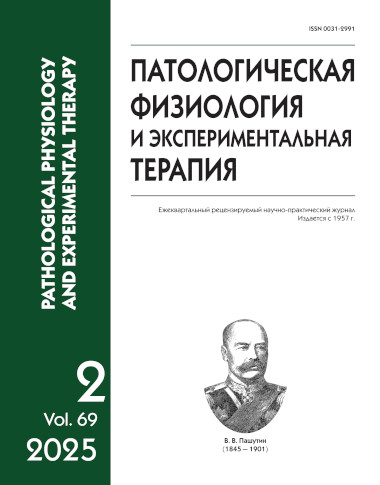The pathogenic role of PTPN2 gene polymorphisms in diabetes mellitus type 1
Abstract
Background and aims: Type 1 diabetes mellitus (T1DM) is a multifactorial disease characterized by widespread, severe consequences and leads to early disability and high mortality. This type of diabetes is also characterized by b-cells of Langerhans islets destroying in the pancreas, what leads to a complete dependence of patients on the administration of exogenous insulin. T1DM is an inherited autoimmune disease. An important factor in the pathogenesis of T1DM is a genetic predisposition characterized by the presence of functional single nucleotide polymorphisms (SNPs) in the several genes. It was supposed that the development of the inflammatory reaction may be caused by range of factors encoding by genes of NT1 family. These factors are the tyrosine phosphatases of T-lymphocytes. T1DM development can be explained by the presence of functional polymorphic markers of PTPN2 gene. To study the association with diabetes mellitus type 1 we performed analysis of the distribution of frequencies of alleles and genotypes of polymorphic markers of PTPN2 gene, encoding the tyrosine phosphatase of T-lymphocytes type 2. The study included groups of T1DM patients and unrelated controls of Russian origin.
Methods. Genotyping was performed using methods of RFLP and real-time amplification using set of samples from 366 T1DM Russian origin patients with different manifestation time from 14±5 years overall median and 526 healthy peoples in control group. When comparing the frequencies of genotypes, the Pearson criterion was used. A comprehensive assessment of the relationships between the studied genotypes and the risk of disease was carried out using logistic regression, determining the odds ratio (OR) and 95% confidence interval (CI95%), with a value of p≤0.05.
Results. No statistically significant association of polymorphic markers rs2542151, rs3737361 and rs2542156 of the PTPN2 gene with T1DM was found, while a comparative analysis of the frequency distribution of alleles and genotypes indicates an association of polymorphic marker rs2847281 of the PTPN2 gene with this disease in the Russian population (p=0.0088).
Conclusion. Our data on the association of polymorphic marker rs2847281 of the PTPN2 gene with the risk of developing T1DM complement information on the mechanisms of its occurrence and pathogenesis, which may help to understand the basics of the pathophysiology of T1DM and identify groups of people at high risk of developing T1DM.






